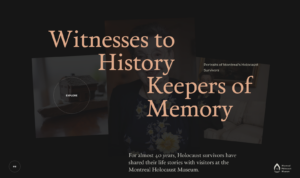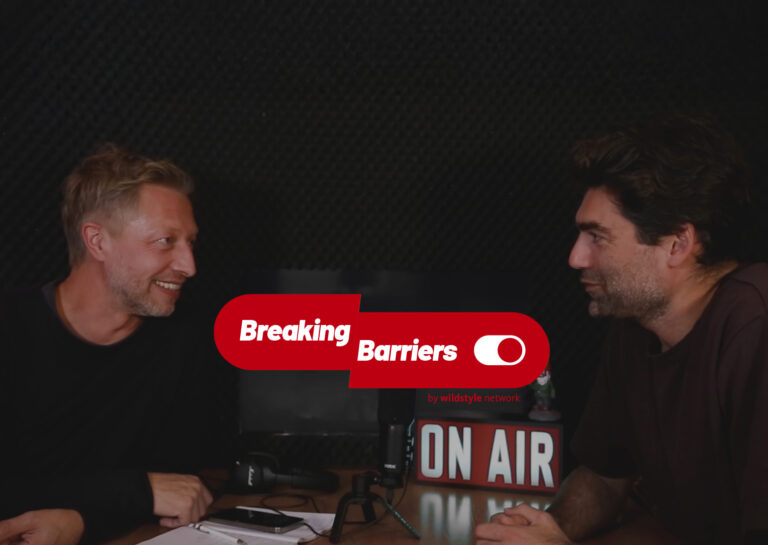Embracing the Future: How 2023’s UX Design Trends are Transforming Digital Interactions across all Devices and why it will be about Conversations, again.
In an (almost) ever-evolving digital landscape, 2022 is largely seen as a pivotal year for UX design. We at WIldstyle Network have been witnessing a paradigm shift has created two camps: Some of our clients are in awe and others are feeling overwhelmed by the options.
The UX design trends shaping this transformative era have pushed the boundaries of user experience, introducing ground-breaking innovations that have redefined the way we interact with technology. While the last two years were shaped by voice assistants like Alexa, Siri or Cortana, and haptic feedback integrations in our devices as well as the dark mode, inclusive design and micro-interactions (to name a few), we’re now going beyond what was foreseeable.
We’re now seeing some other trends that go beyond the curve.
Unforeseeable Trends now become a Reality in UX Design. They’re growing at unpredictable Speed
We’re talking about the Metaverse, biometric authentication, and of course, artificial intelligence.
As we delve into these polarizing trends, it’s essential to recognize the impact they have on businesses and users alike, and understand how they can make or break digital success. In this article, we’ll explore the most influential UX design trends of 2023 and discuss how they’re revolutionizing the digital world, whether you’re a fervent supporter or a skeptic.
Device Synchronization
This trend is especially important as it indirectly determines every other trend. Device synchronization allows users to seamlessly sync and use their data and settings across different devices. People don’t just want high-quality applications, but also the availability of these on all their devices.
Who hasn’t experienced getting information on a laptop and then opening the same website on a phone later, only to not find what they had previously found. Frustration is guaranteed.
Obviously there are many products to choose from – cheaper, more expensive, sparsely equipped or packed with functionalities. The choice is not a problem. The problem is whether a user can sync settings and content between a PC, laptop, phone, tablet, smartwatch, and any other internet-connected digital device.
Therefore, the well-known mobile-first design is extremely important and ubiquitous. People use their mobile devices in a variety of ways and for many reasons – booking flights, talking to friends, making online calls, shopping online and much more. Everything is done on the go, with a focus on speed and convenience.
That’s why it’s crucial that UX and UI design work together. UX designers must ensure that their applications are responsive and cross-device compatible to provide a consistent experience for users. Applications must adopt a design language that is clear and easy for users to scale. If this is implemented on each device, visitors will become paying customers.
Cross-Application Design
This trend is particularly noticeable in the fintech sector, where many companies work with partners or use their tools to enhance their offerings. To ensure a seamless user experience, companies should integrate their partner’s applications into their own product architecture instead of just communicating them through subpages.
For example, an app for paying electricity bills or taking out a mortgage from a third-party provider should display clear rules and options without leaving the look & feel and messaging of the app. This way, the user experience remains positive for the customer as they don’t feel like they are using a partner’s app.
Scrollytelling
Classic scrolling is increasingly tiring for the user. No one wants to scroll down to find relevant information, hoping that boring sections of the page will finally become useful.
Scrollytelling is a wonderful remedy for this. It is basically a technique in which the story of a website or application is told through scrolling. It combines narrative techniques with interactions and animations. For example, the user scrolls and sees a series of animations that pop up next to the text in the middle. Or an additional graphic that explains what you just read. Dynamic elements lure the user through movement, color, and contextualization. An advantage of scrollytelling is that it presents content in an engaging and entertaining manner, thus holding the user’s attention. It can also be used to make complex information more understandable.
Witnesses to History Keepers of Memory – Portraits of Montreal’s Holocaust Survivors
Hello Emotional Design, again.
Emotional design is becoming increasingly important in the UX field. It aims to enhance the user’s experience by incorporating emotions in a positive way when interacting with products and services.
The app provides the user with feedback, context, and positive reinforcement. “You saved this month!” “You just broke your 5000-meter run record!” “You collected more business leads this week than last week!” Congratulations!
Designers who perfect their gamification methods using rewards, feedback, and reinforcement will motivate their users and create a sustainable connection between the user and the application.
The application’s messages to the user are usually a combination of micro-copy and graphics. Emotional design approaches lead to higher user satisfaction and loyalty, leading to long-term growth.
Artificial Intelligence doesn’t steal Jobs, it will rather enhance if not accelerate simply everything in UX Design
So how is artificial intelligence impacting UX design in 2023?
The obvious answer is that AI will streamline the research and design process. AI in UX design will also help to designers to create user-friendly UIs. However, we’re currently experimenting with AI services that personalize recommendations in apps and websites – omnichannel! Providers like Dynamic Yield are at the forefront of this process. Other SaaS providers like Segment (by Twilio) are helping us with personalized campaign pages.
Of course, chatbots like OpenAi’s ChatGPT will soon enable conversations with machines. While this might be down the road, our innovation team is already experimenting how OpenAI and Microsoft Azure can go hand-in-hand when it comes to onsite search and solution design.
Metaverse is dead, long live VR
The Metaverse is now called VR again. Simply said, it’s still a world that extends across multiple virtual realities and in the best case even across platforms. This is a slowly but steadily growing trend in the field of UX. The possibilities are only limited by the acceptance of the users and, in most cases, by the budgets!
In the groundbreaking and UX award nominated Metaverse project “Collision Zero”, UX design plays a pivotal role in providing an immersive and educational experience for young school kids.
By placing young users in the driver’s seat, this cutting-edge app utilizes virtual reality simulation of realistic traffic environments to simulate real-life scenarios involving accidents with kids on their way to school. As the children navigate through various scenarios, they witness the consequences of driving decisions, such as speeding or being distracted, from a first-person perspective. This emotionally engaging approach, supported by intuitive UX design, allows the children to develop a deeper understanding of road safety and cultivate empathy toward other road users.
The app’s super-simple and user-friendly interface, realistic graphics, and interactivity enable kids to easily navigate the virtual environment and experience the impact of their decisions, ultimately fostering responsible driving habits for their future.
This app is raising awareness about hazards on the road, encouraging kids to be more vigilant when they walk to school and eventually when they become drivers themselves. They learn to anticipate and avoid dangerous situations by adopting responsible driving habits, such as adhering to speed limits, avoiding distractions, and respecting pedestrians and cyclists.
Collision Zero – The Future of Public Accident Prevention
However, to meet the demand both in quality and quantity, specialists are needed to develop and design the user experience and user interface in virtual space. It requires UX designers to deal with new forms of interaction, navigation, and design guidelines for this type of 3D environment. It will be important to create a natural and intuitive experience while users move in this new digital world.
Conclusion on the UX design trends 2023:
These are just some of the most important UX trends for 2023, but they give a good overview of what aspects should be considered in designing applications. I’m looking forward to the new challenges, because it will be exciting for sure!








